
Photo tour in Azores, Portugal
Join us in the Azores for a unique photo tour, where you’ll elevate your creative skills with expert guidance from Ronald Soethje, Bruno Ázera, and Nomadict.
We get to know Ogik’s favorite photography spots, forests, and hiking trails in Austria. In addition, we dive into his creative workflow, including five strategies to elevate your growth sustainably.
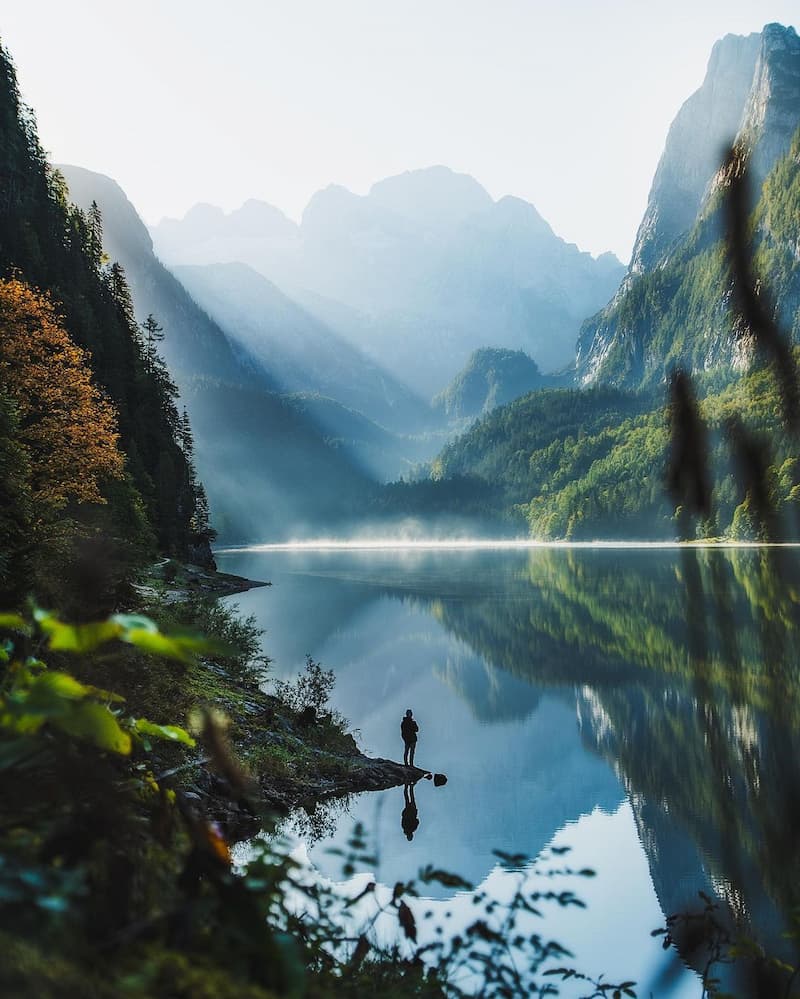
Forests cover about 47% of Austria’s land area, making it one of the most forested countries in Europe. The Bregenzerwald Forest, Hohe Tauern National Park, Wienerwald, Kalkalpen National Park, and Nockberge National Park are home to some of Austria’s most iconic forests, known for their beauty and ecological importance. In combination, these forests are home to a wide variety of plant and animal species, including more than 1,000 species of higher plants and approximately 1,200 species of fungi, and many species of trees like spruce, fir, beech, and oak.
The Bregenzerwald Forest:
This forest, located in the western part of Austria, is known for its picturesque landscape and abundance of spruce and fir trees. It is also home to a number of traditional mountain villages and the Bregenzerwald Nature Park, which protects the region’s unique flora and fauna.
The Hohe Tauern National Park:
This national park is located in the eastern part of Austria and is home to some of the country’s tallest mountains, including the Grossglockner, Austria’s highest peak.
The Wienerwald:
This forest, located just outside of Vienna, is one of the largest in the country and is known for its beautiful beech and oak trees. It is home to a number of recreational facilities, including hiking trails, cycling routes, and ski slopes.
The Kalkalpen National Park:
Located in Upper Austria, this national park is known for its rugged landscape. It is home to the largest area of primeval forest in the Alps and is a crucial habitat for threatened species such as the lynx and the black stork.
The Nockberge National Park:
This national park, located in the state of Carinthia, is known for its alpine meadows and its forests of spruce and larch. It is also home to a number of alpine lakes, including the Millstätter See, which is popular with swimmers and boaters.
The Austrian Forest Act, enacted in 1991, is designed to protect and manage the country’s forests sustainably. So they are harvested in a way that allows them to regenerate and continue to provide ecological and economic benefits. And this is because Austria’s forests play a crucial role in regulating the country’s water and air quality – like most of Earth’s forests worldwide – absorbing and filtering pollutants and helping to prevent erosion and landslides. Many of these forests are also popular among tourists, visiting them to enjoy the many hiking trails.
Austria’s forests offer a variety of hiking trails, from short, easy trails to more challenging routes that take several days to complete. One popular trail in Austria’s forests is the “Burgenweg” (Castle Trail), which passes through the region of Lower Austria, running from Gmünd to Mödling. It is 250km long, making it suitable for experienced hikers.
Furthermore, it passes through different landscapes, including forests, meadows, and vineyards, and offers spectacular views of the surrounding countryside. Along the way, hikers can visit castles, monasteries, and other historical sites or enjoy the local cuisine and hospitality of the region.
Another popular trail is the “Donau-Auen-Weg” (Danube Wetlands Trail), which follows the Danube river through the Lower Austrian region of the Wachau. This trail offers a mix of cultural and natural attractions, including vineyards, historic towns, and wetlands.
Other trails in Austria’s forests include the Via Alpina, which traverses the Alps from the Czech Republic to Slovenia, and the Mariazellerweg, which takes hikers through the scenic landscape of the Mürztal valley in Styria.
(1) Steyr
Steyr is located in the northeastern part of Austria, in the region known as the Mühlviertel. The area is known for its rolling hills, forests, and rivers, and is quite a popular destination for outdoor enthusiasts. In the Steyr area, there are many opportunities for hiking, cycling, and other outdoor activities.
The region is also home to several protected natural areas, including the Steyr-Pramstrahler Auen, a nature reserve that is home to a variety of plant and animal species. Other nearby natural areas worth mentioning are the Kalkalpen National Park and the Mühlviertler Alpen, both of which offer a variety of outdoor recreational opportunities.
(2) Oberösterreich
Oberösterreich, or Upper Austria, is a state in Austria known for its diverse and beautiful natural landscapes. The state is home to a variety of habitats, including forests, lakes, and mountains, and it is a popular destination for outdoor enthusiasts. Some of the natural areas that are worth visiting in Oberösterreich include:
(2.1) Kalkalpen National Park:
This park is located in the northwest part of the state and is known for its rugged mountain scenery and diverse wildlife. It is a popular destination for hiking, mountain biking, and skiing.
(2.2) Mühlviertler Alpen:
The Mühlviertler Alpen is a mountain range located in the north of the state, near the Czech border. The area is known for its forests, lakes, and alpine meadows, and it is a popular destination for hiking, climbing, and other outdoor activities.
(2.3) Traunsee:
Traunsee is a large lake located in the central part of the state. It is known for its crystal-clear waters and is a popular destination for swimming, boating, and other water sports.
(2.4) Danube Valley:
The Danube Valley is a region in the west of the state that is known for its rolling hills, forests, and vineyards. It is a popular destination for hiking, cycling, and wine tasting.
(3) Salzkammergut
The Salzkammergut is known for its beautiful lakes and mountains having a wide range of outdoor recreational opportunities, including hiking, climbing, skiing, swimming, boating, and more. Some of the natural areas that are worth visiting in the Salzkammergut include:
(3.1) Dachstein Mountains:
The Dachstein Mountains are a range of high peaks in the northern part of the region. They are known for their rugged beauty and are a popular destination for hiking, climbing, and skiing.
(3.2) Wolfgangsee:
Wolfgangsee is a large lake located in the central part of the region. It is known for its crystal-clear waters and is a popular destination for swimming, boating, and other water sports.
(3.3) Attersee:
Attersee is a large lake located in the western part of the region. It is known for its beautiful views and is a popular destination for swimming, boating, and other water sports.
(3.4) Loser:
Loser is a mountain located in the eastern part of the region. It is known for its panoramic views and is a popular destination for hiking and skiing.
(4) Tauplitzalm
The Tauplitzalm is a mountain in the Dachstein mountain range, located in the southeastern part, near the border with Slovenia and Hungary. The area is known for its beautiful mountain scenery and natural attractions, including the Tauplitz Glacier – one of the largest glaciers in the Eastern Alps.
(5) Gosausee
The Gosausee is a lake in the Salzkammergut region of Austria at an elevation of 1,640 meters (5,380 feet) above sea level. Surrounded by peaks that rise to over 2,700 meters (8,860 feet), the lake is known for its crystal-clear waters and beautiful mountain setting.
(6) Schiederweiher
The Schiederweiher is a lake in Hinterstoder, Upper Austria. It is located in the Austrian Alps and is a popular destination for recreational activities such as swimming, fishing, and hiking.
(7) Almsee
The Almsee is a small lake located in the Salzkammergut region of Austria, near Gosau. It is situated at an altitude of 1,620 meters (5,315 feet) in the Dachstein Mountains, surrounded by alpine forests and meadows. The lake is popular for swimming and fishing, and there are hiking and biking trails in the surrounding area. The Almsee is also known for its clear, turquoise waters, and in the winter, the lake and surrounding area are popular for cross-country skiing and snowshoeing.
(8) Hallstatt
Hallstatt is a small town in the Salzkammergut region of Austria, on the western shore of the Hallstätter See (Lake Hallstatt). It is known for its picturesque setting and rich history, with many cultural and natural attractions. The town is surrounded by the Dachstein Mountains and is located on a narrow strip of land between the lake and the mountains.
(9) Plansee
The Plansee is a lake located in the Austrian state of Tyrol, in the Tiroler Zugspitz Arena region. It is situated at an altitude of 1,550 meters (5,085 feet) and is surrounded by the beautiful alpine scenery of the Karwendel Mountains.
(10) Langbathsee
The Langbathsee is a lake located in the Austrian state of Lower Austria, in the region known as the Waldviertel. It is situated at an altitude of 520 meters (1,710 feet) and is surrounded by forests, fields, and meadows. Nearby, you can visit the town of Gresten, which is home to the Gresten Palace and the Gresten-Land Town Museum. Other nearby attractions include the Langbathspitze, a mountain with panoramic views of the surrounding area, and the Gresten-Land Monastery, a historic monastery founded in the 11th century.
With different compositions, we can produce a wide variety of photos, even in the same place, and I think the series presented below is a good example. So I strongly believe in exploring places around where I live and finding extraordinary beauty nearby. This strategy works if you use elements such as leaves or twigs as a foreground and play with the different layers to create variations.
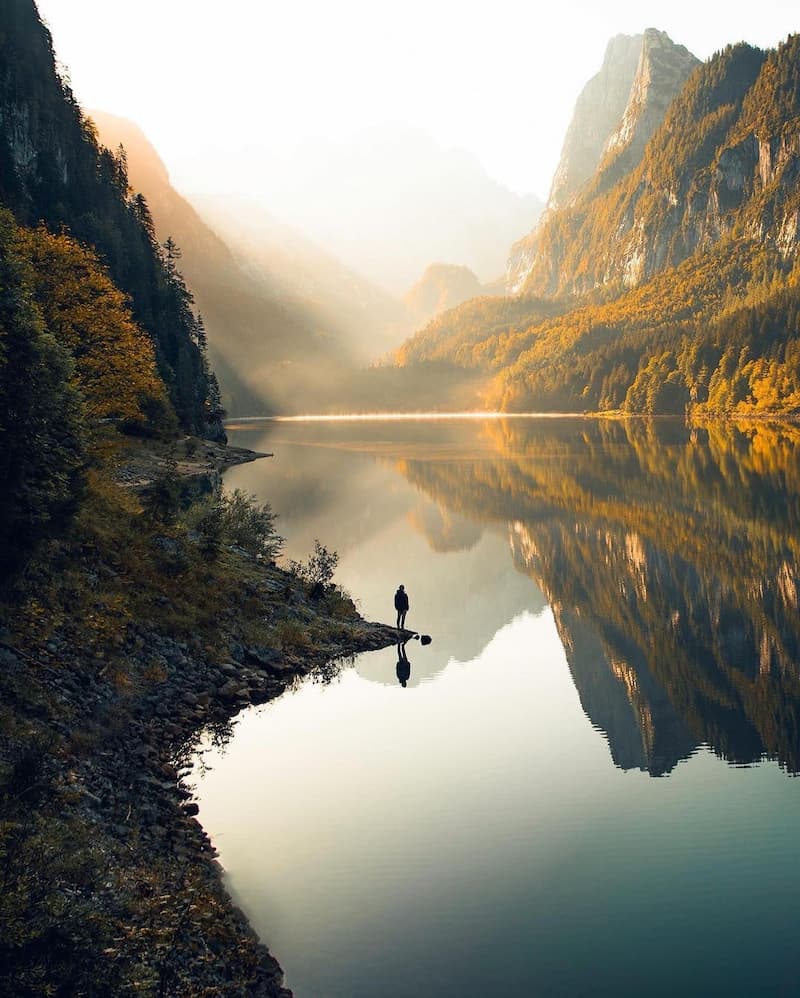
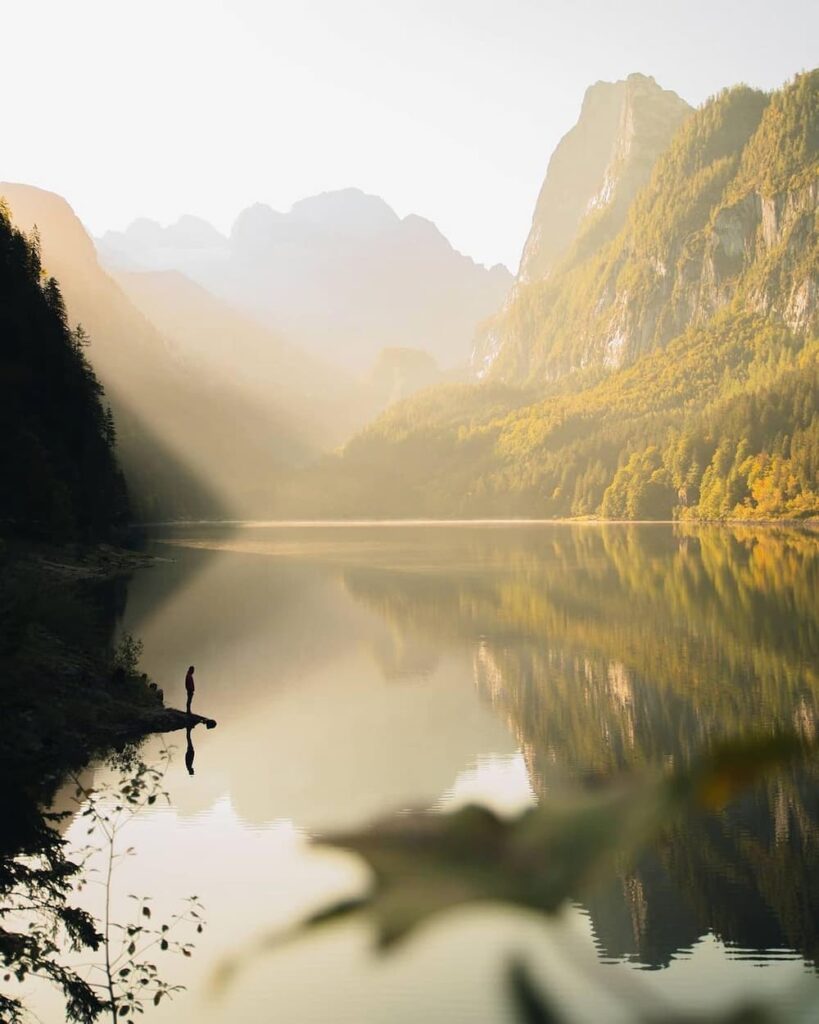
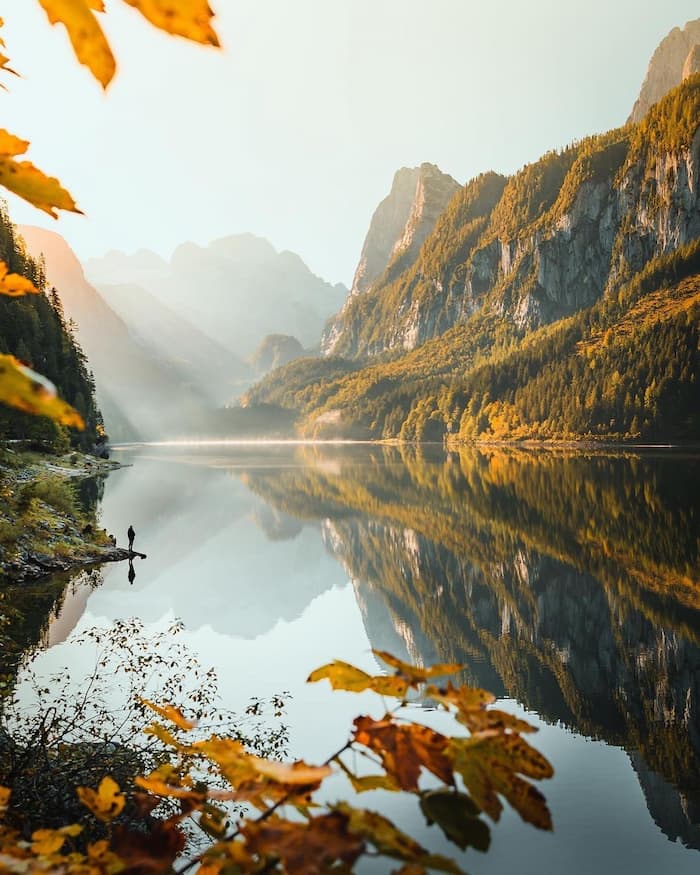
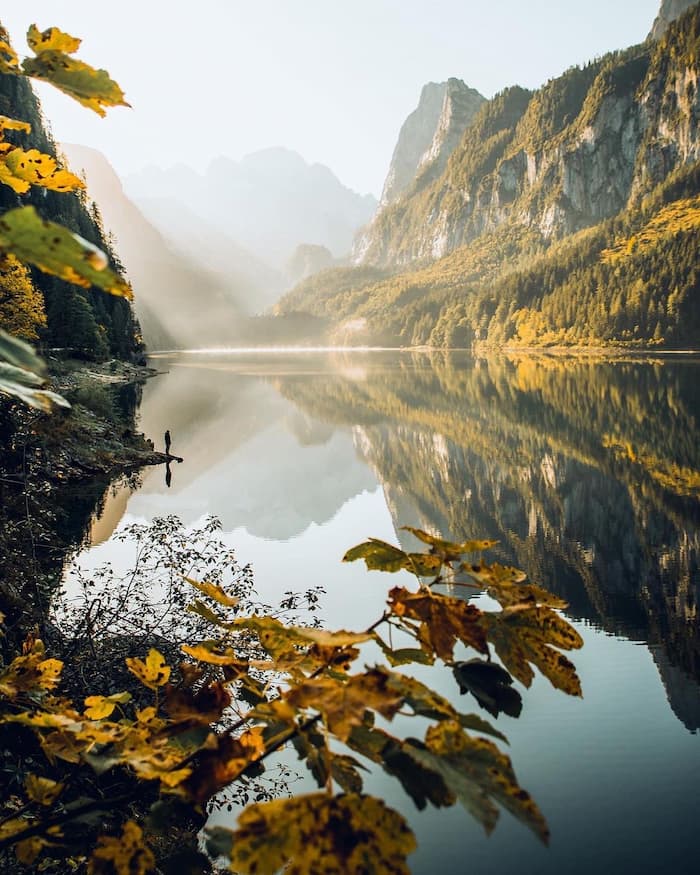
And as I prefer to edit my photos slightly, I pay attention to my raw pictures – they need to be good in terms of composition and exposure. And I almost always take underexposed images as they make editing easier for me
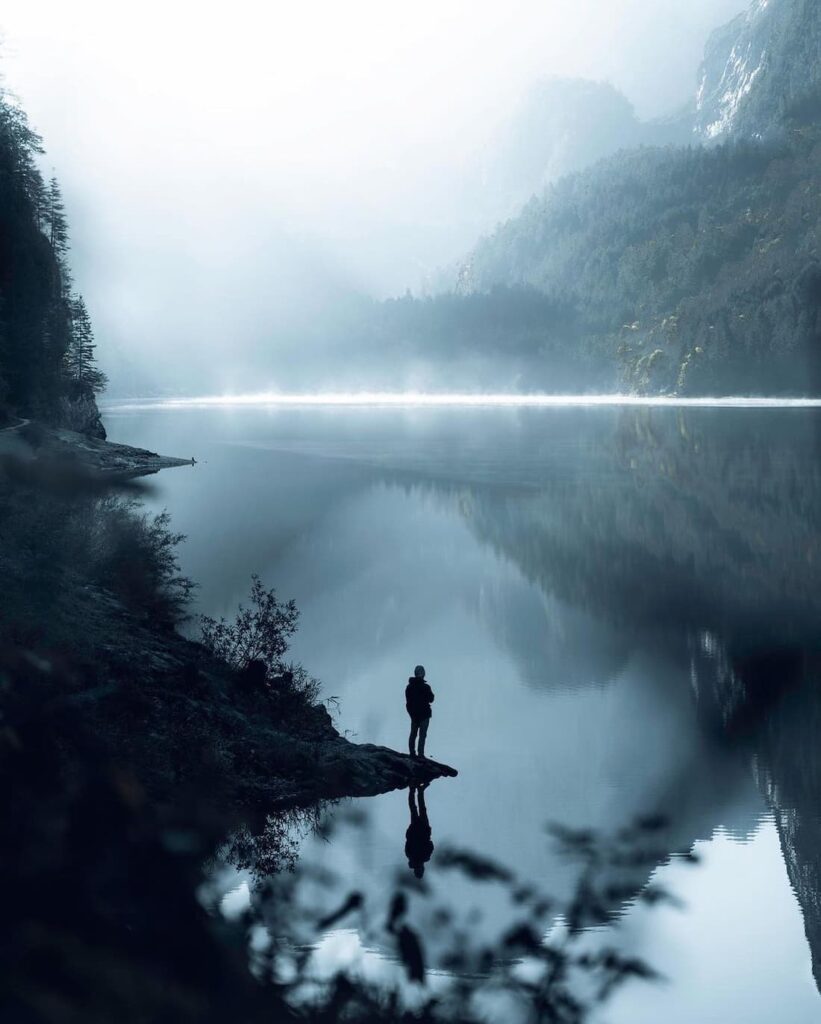
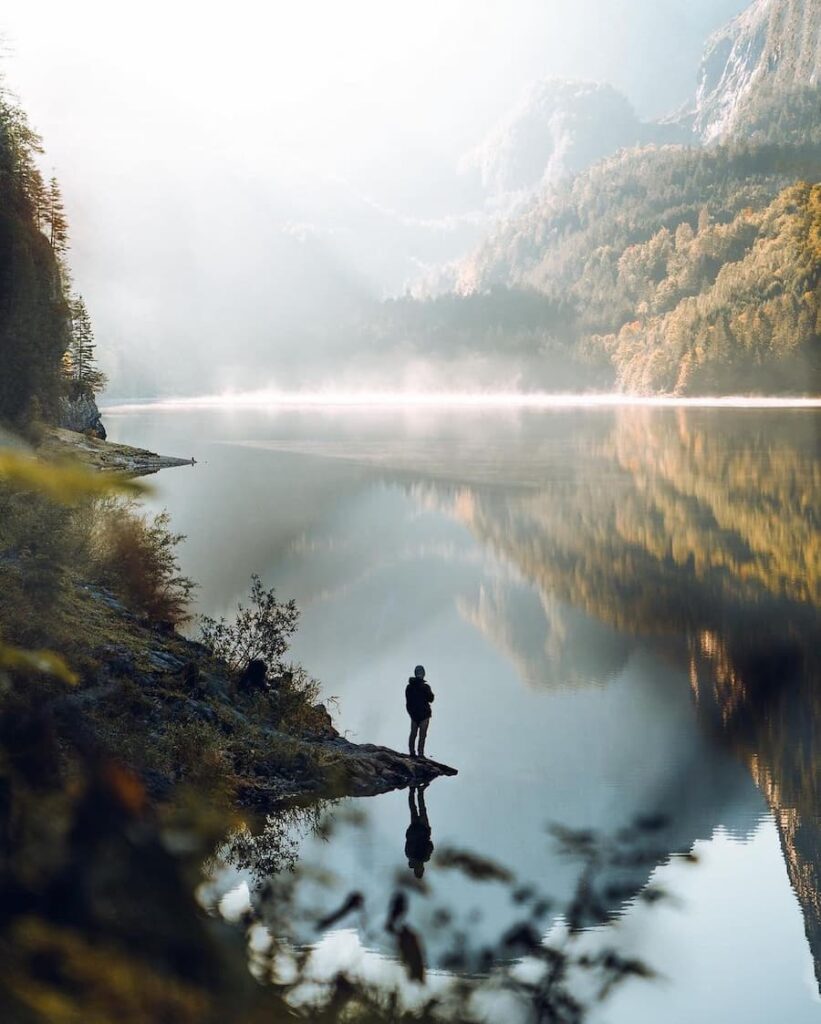
I generally use my presets because it saves me time. Nevertheless, each photo needs some attention and adjustments. The most relevant tools in Lightroom are white balance, curves, and color grading. Then I export the image to Photoshop for a final touch, like removing unnecessary things using the spot healing brush. With editing, I can enhance the mood of a photo and provoke emotion.
What I have learned over the past year is that whatever trend arises (drones, reels, NFT…), you do not join to be part of the club – but to give yourself new tools to grow, step out of your comfort zone and see how you can use what is trending to develop yourself and your work.
A good example was when I decided to upload reels in 2021. At first, I was not interested because I thought I would only pursue photography, not videography. One day, some friends suggested uploading a reel, and I did it. In the beginning, the videos I uploaded went just fine – until one of my reels reached 1.5 million plays. Since then, my growth on social media has increased rapidly.
Thus, two of my most important tips are to try new things often and stay consistent throughout the process. You never know when your content will go viral or reach key parties that can accelerate your professional growth.
During the last few months, I have had the opportunity to test and edit my pictures with this new portable monitor by ColorPro. It has become the perfect tool for editing professionally my photos on the go. As I continue exploring my home country, I cannot wait to share more of my work and favorite spots in Austria wit you!
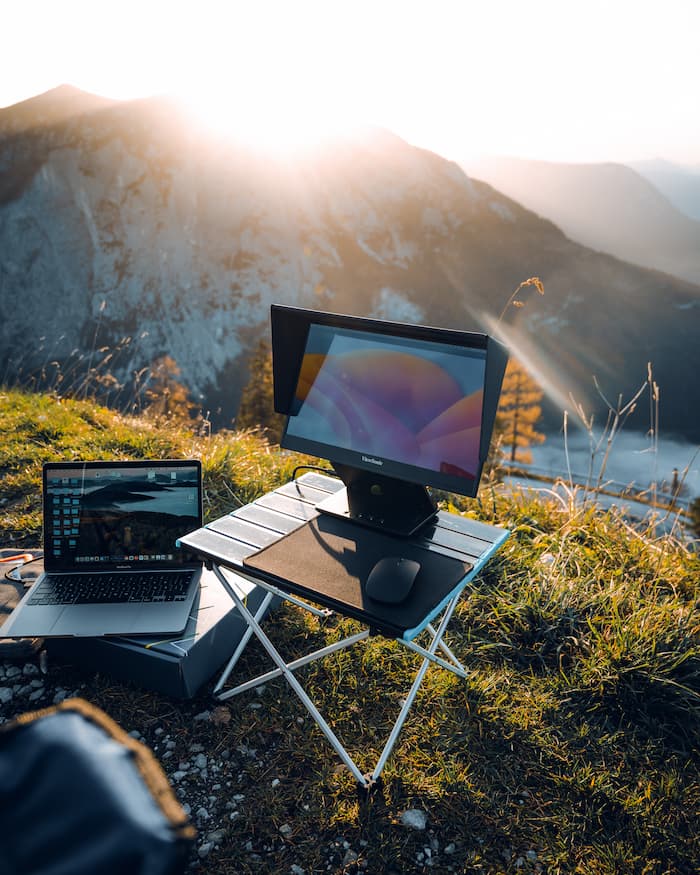
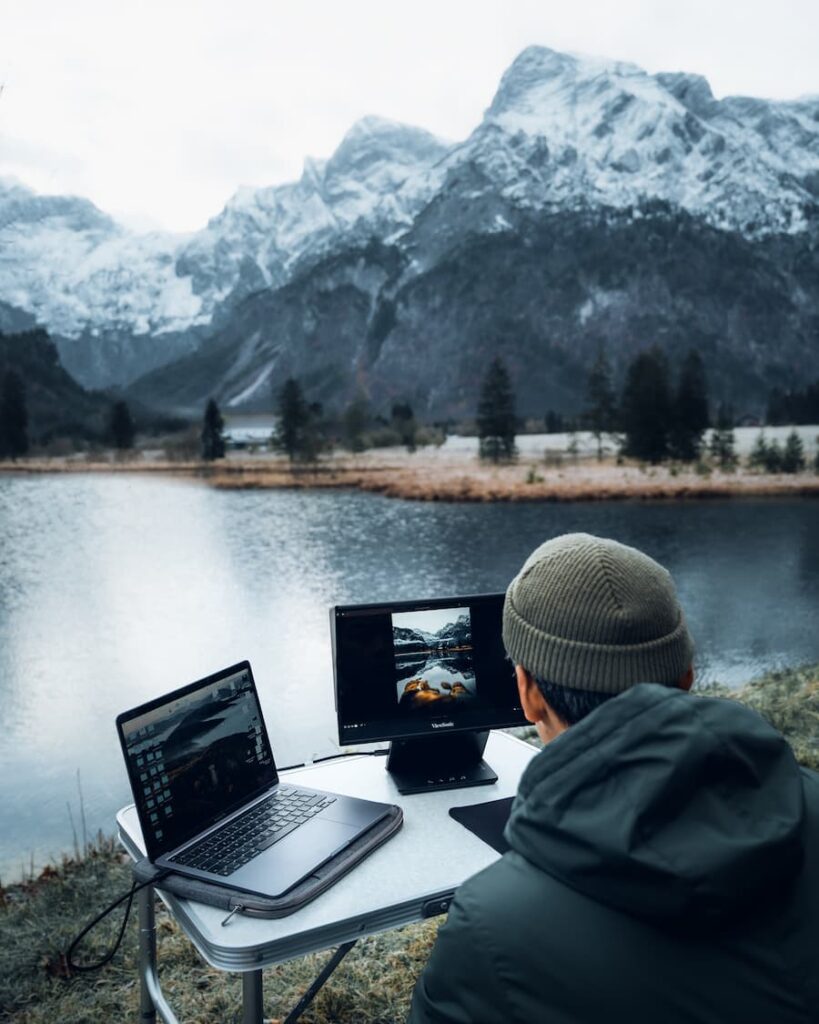
Would you like content like this sent to your inbox?

Join us in the Azores for a unique photo tour, where you’ll elevate your creative skills with expert guidance from Ronald Soethje, Bruno Ázera, and Nomadict.

In this article, Forest shares how years of chasing scale, silence, and raw landscapes shaped his approach to photography, from the deserts of Kazakhstan to the volcanic ridges of Iceland. He talks about how he uses light, texture, and vast negative space to create images that feel both intimate and overwhelming.

Simon shares the journey behind his photography, from early inspirations to field techniques, editing, and the story of the winning shot that shaped his path.

In this article, Miro shares how his love for cinematic music evolved into a deep passion for photography and how he uses light, color, and atmosphere to turn the streets of Prague into living film scenes.

In this article, Stefanie reveals how her background in physics sparked her passion for astrophotography and how she blends science with creativity to capture the beauty of the night sky. Readers will discover her approach to color, contrast, and editing, as well as her aurora photography workflow.

Spanish photographer Yhabril captures the profound connection between humans and the mountains that shaped him. Growing up in the Pyrenees, his work bridges outdoor sports, landscapes, and celestial scenes — often blending athletes, moonlight, and wilderness into striking visual stories.

In this article, Ariane shares how photography helped her navigate personal challenges, connect authentically with people and animals, and develop a philosophy rooted in empathy and artistic freedom. Readers will also discover her ethical approach to wildlife photography and her trusted equipment for both camouflage techniques and cameras.
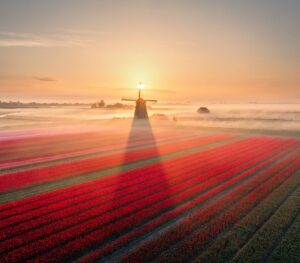
Discover how to photograph Dutch tulip fields in their most magical light. From choosing the right gear and lenses to mastering composition, color, and aerial perspectives, this guide shares creative techniques to capture the beauty of the Netherlands’ tulips. Learn how light, color grading, and proportion bring emotion into every frame.
